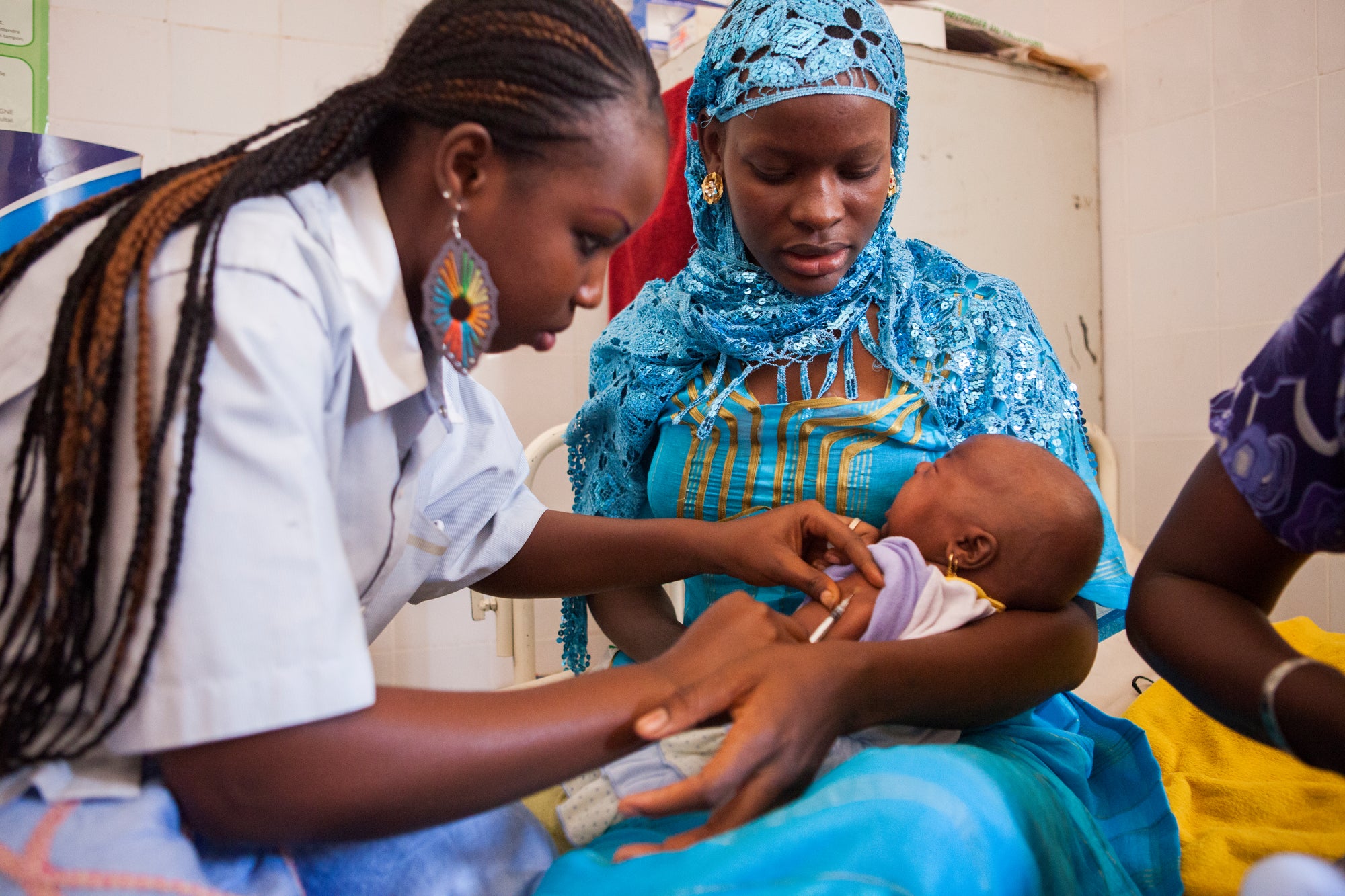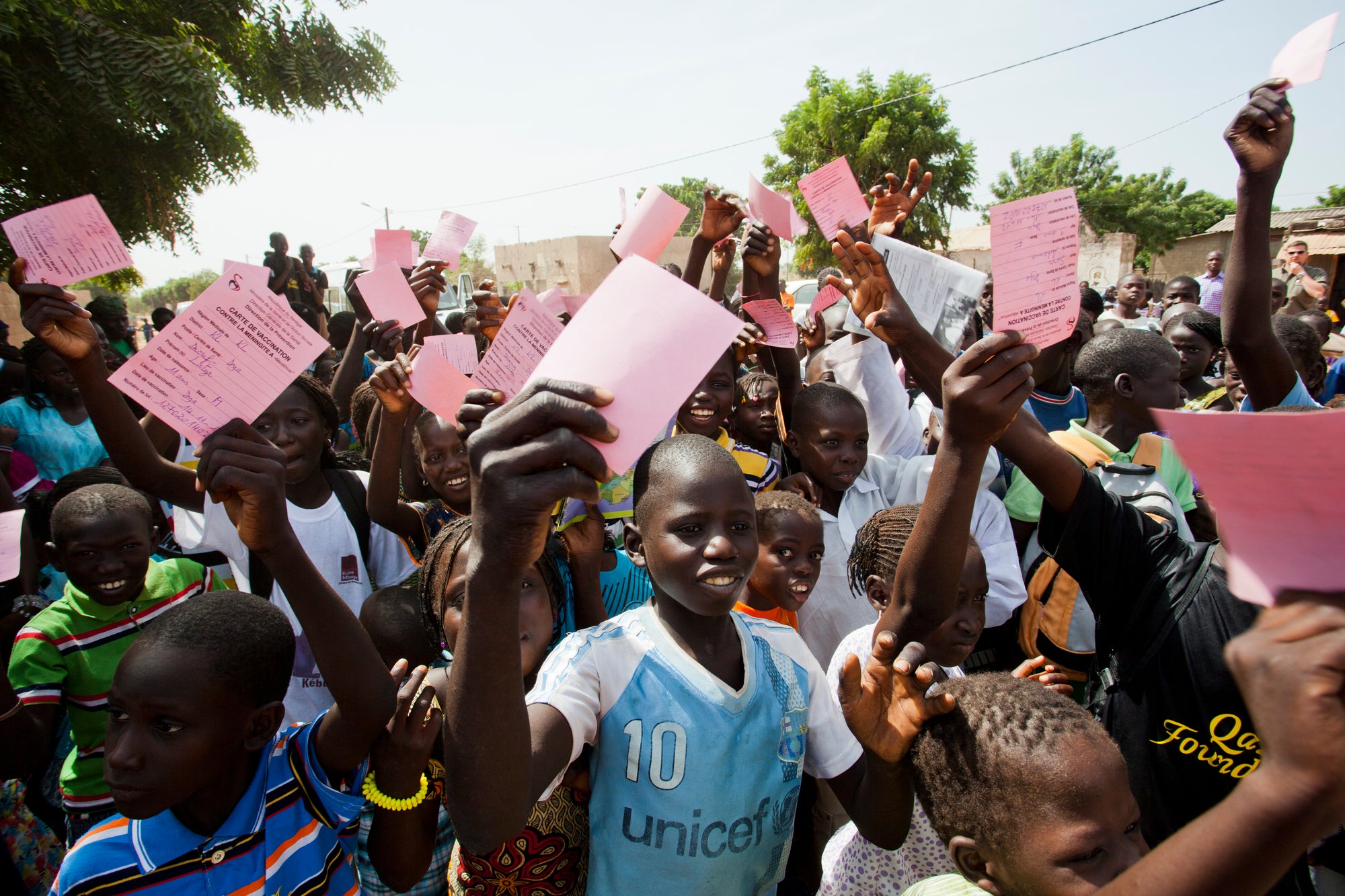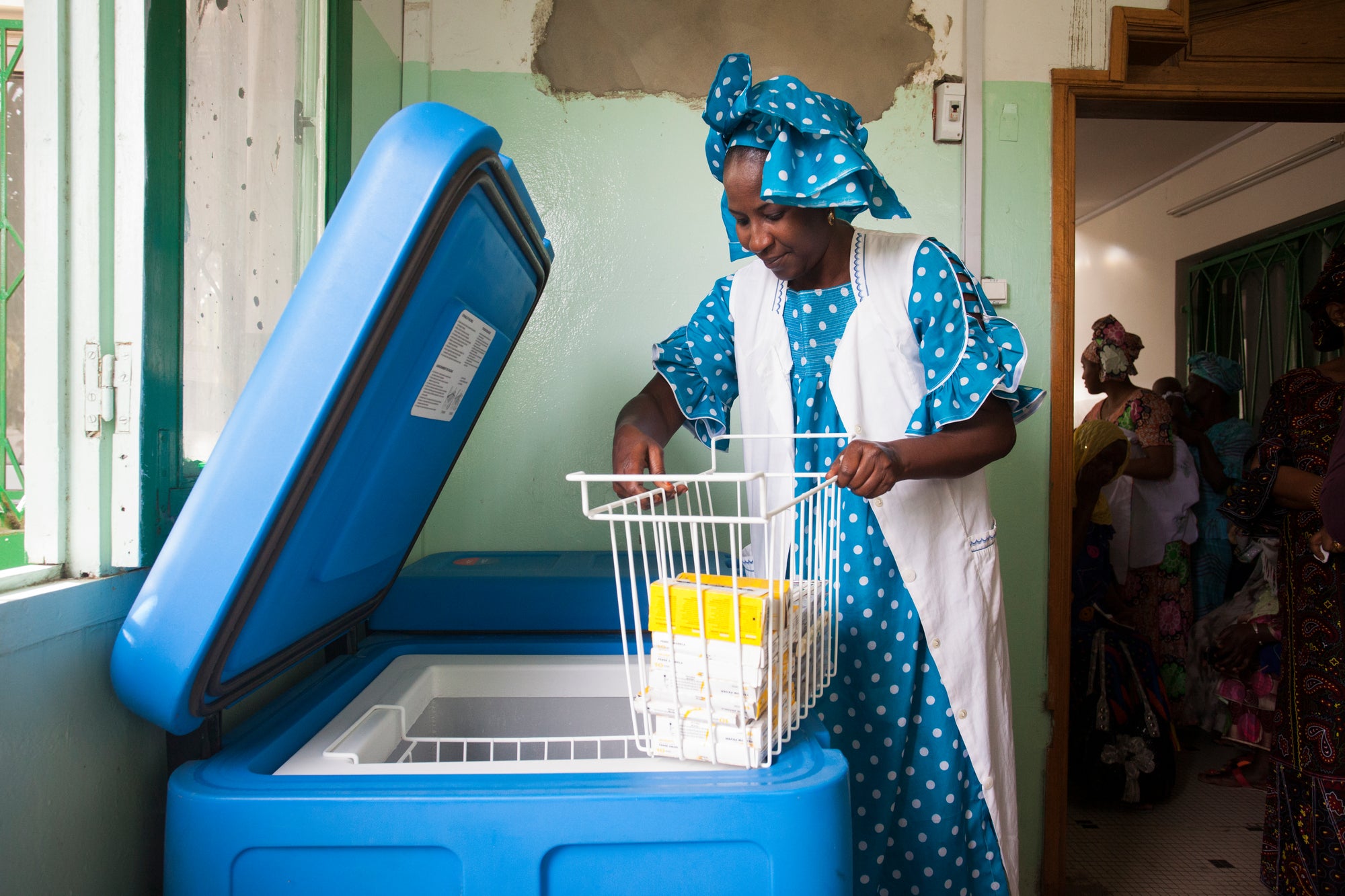Vaccine Delivery in Senegal
CONTENTS

Key Insights
Senegal’s improvements in DTP3 coverage were largely driven by historical and longstanding political commitments to health and deep engagements with communities. By adapting policies and tailoring strategies to meet community needs, Senegal was able to increase vaccination coverage rates, generate demand, and expand access.
Promoted Vaccine Uptake Through Targeted Community Engagement Strategies
By leveraging the community health workforce and engaging the community with innovative strategies, Senegal was effectively able to increase demand for vaccines.

Senegal has a long and rich history of community engagement as a focal point for health campaigns, exemplified by policies such as the Reaching Every District/Reaching Every Child strategies. To build trust, generate demand, and ensure the uptake of childhood vaccinations, Senegal has championed approaches that reach communities where they are. This includes community health workers, such as the Bajenu Gox, engaging families, school outreach, and media engagement to raise awareness and combat misinformation.
Tailored services to effectively engage hard-to-reach populations
By prioritizing access to vaccines and tailoring services to meet communities where they are, Senegal effectively increased their vaccination rates.
To optimize outreach efforts, Senegal tailored their immunization strategies through micro-planning and initiatives designed to expand reach and meet immunization targets. Strategic planning increased access to vaccination services by adjusting them to meet community needs. Services were expanded and adjusted to be available at religious places, farms, on weekends and evenings, and mobile sessions were implemented to provide vaccinations in schools and other public places. These strategies aimed to reach historically harder-to-reach populations, such as Senegal’s nomadic pastoralists, resulting in widespread improvement in DTP vaccination rates across the country.

Prioritized improving facility readiness and strengthening the broader health system
By establishing health as a human right in policy, Senegal ensured commitment and shared ownership for health on all levels while strengthening HRH capacity and improving facility readiness.

In the early 2000s, Senegal’s constitution established health as a human right, leading to strengthened commitments to health across sectors. This resulted in prioritized resources for programs within immunization, specifically for facility readiness indicators like transportation, training, and cold chain maintenance. By also strengthening the health system through the expansion and improvement of facilities and enhancing HRH capacity, Senegal was able to decrease travel time to facilities and better equip them to successfully provide immunization services.

VACCINE DELIVERY IN SENEGAL
Key Points
The Exemplars in Global Health program seeks to identify low- and lower-middle-income countries (LMICs) that have shown particularly strong performance in vital areas of public health despite resource limitations.
The ultimate intention of the program is to give policymakers who work in (and with) LMICs a set of proven strategies and tactics that they can follow to achieve similar gains within their countries.
Because of its relevance to public health worldwide, vaccination is an especially important area for identifying Exemplars that might have blueprints others could follow.
Exemplars in Global Health aims to help public health decision makers around the world identify and implement proven strategies to improve health for people in lower- and middle-income countries (LMICs). The Exemplars program analyzes countries that have made extraordinary progress in attaining important health outcomes in spite of their resource limitations. Our hypothesis is that the lessons contained in this growing list of data-driven narratives will be a resource to government officials, researchers, entrepreneurs, nonprofit leaders, and others committed to improving health within their own countries.
In selecting Exemplar countries, we review data from within an identified time horizon to pinpoint nations that outperformed peers in key areas of public health, controlling for factors like economic growth. We seek countries from a variety of regions, to draw lessons that are relevant to many different contexts. We then work with research partners and technical advisors to understand the drivers of their success.
This narrative explores success in early-childhood immunization. The Exemplars in Global Health program has identified a set of countries that have made notable progress in achieving high vaccination coverage. This report describes the drivers of success in one of those nations, Senegal, and identifies strategies that may be applicable elsewhere.
As highlighted by the Immunization Agenda 2030, vaccines are among the greatest public health tools in human history and are essential in any primary health care system. High levels of vaccination coverage—defined as the proportion of the target population who have received recommended vaccines—are necessary to control or eliminate vaccine-preventable diseases within a population.
Achieving and sustaining high coverage requires financial investment, but the return on investment may be unparalleled: for each dollar spent on routine and supplementary vaccinations in LMICs over the period of 2011–2020, the average country-level return on investment is estimated to be 51 times the cost.
Many potential benchmarks could be used to identify Exemplar countries and assess the quality of their childhood vaccination programs. We have focused on the first and third doses of diphtheria-tetanus-pertussis-containing vaccine (abbreviated as DTP1 and DTP3) as proxies for the overall childhood vaccine delivery system.
DTP1, administered to infants at six weeks of age, is an indicator of success in introducing parents and children to a vaccination program. DTP3, which is given at 14 weeks, reflects retention in vaccine programs.
The World Health Assembly has endorsed a goal of 90% DTP3 coverage at the national level, with coverage rates no lower than 80% within any individual province, state, department, or other major subnational unit. The subnational target emphasizes that equity is essential everywhere, even in regions that are especially remote, impoverished, or unstable.
While many countries have made significant progress toward achieving these targets, the World Health Organization (WHO)/UNICEF Estimates of National Immunization Coverage (WUENIC) show that progress has fallen short. In 2019, nearly two-thirds of countries met the target of 90% DTP3 coverage. In 2018, only one-third of countries met targets for both coverage and equity. Worldwide DTP3 coverage reached 84% in 2011. That figure remained nearly stagnant until 2020, when the COVID-19 pandemic caused sharp declines in vaccine coverage in many settings.
Although the essential components of a successful vaccine delivery system are widely known, the current literature does not fully describe how and why these strategies are effective. Health officials in resource constrained LMICs must make the most effective use of limited resources. A clear understanding of how similarly comparable countries succeeded in their own programs can be a highly valuable resource for making implementation decisions.
Vaccine Delivery in Senegal

Ask an Expert
Our team and partners are available to answer questions that clarify our research, insights, methodology, and conclusions.
